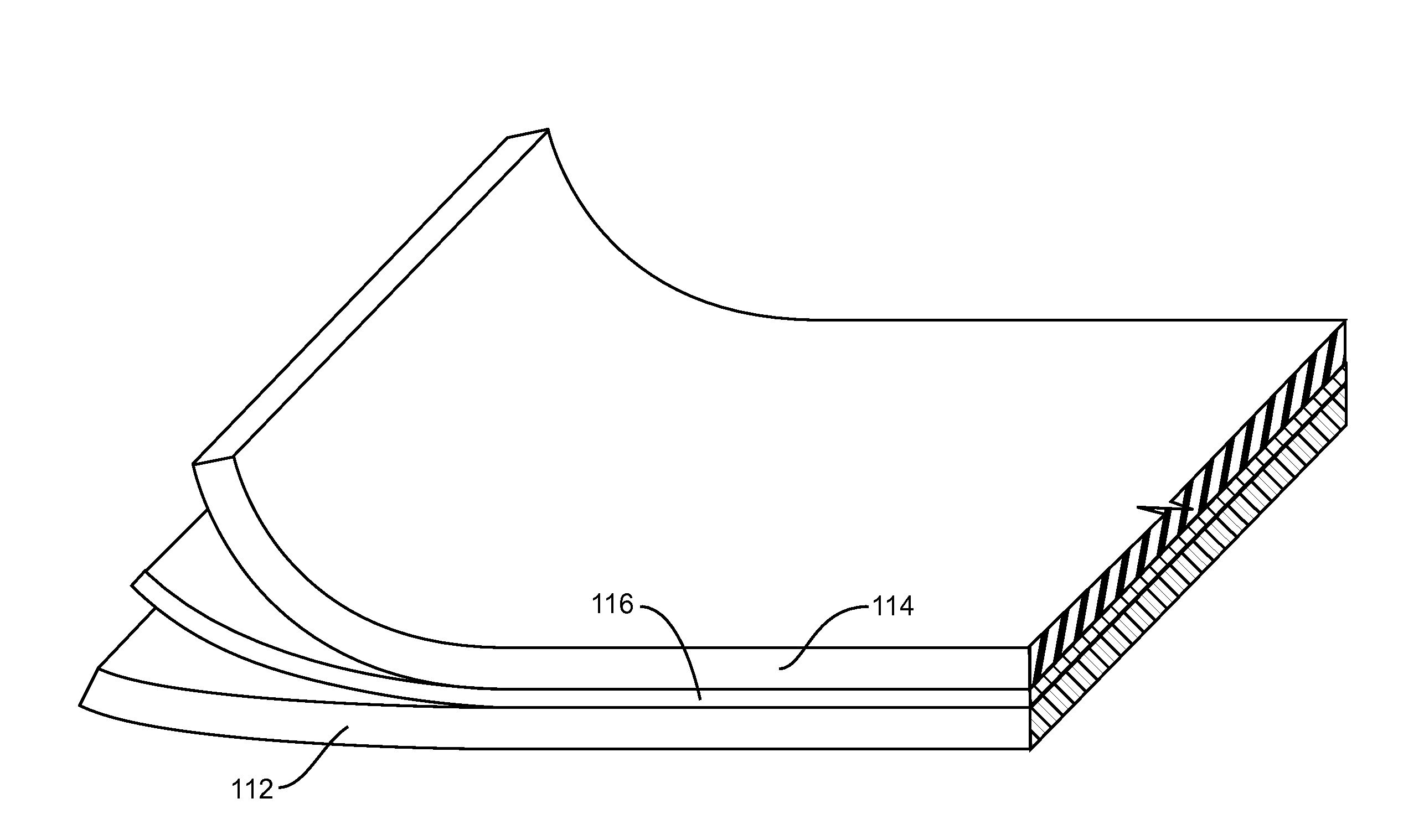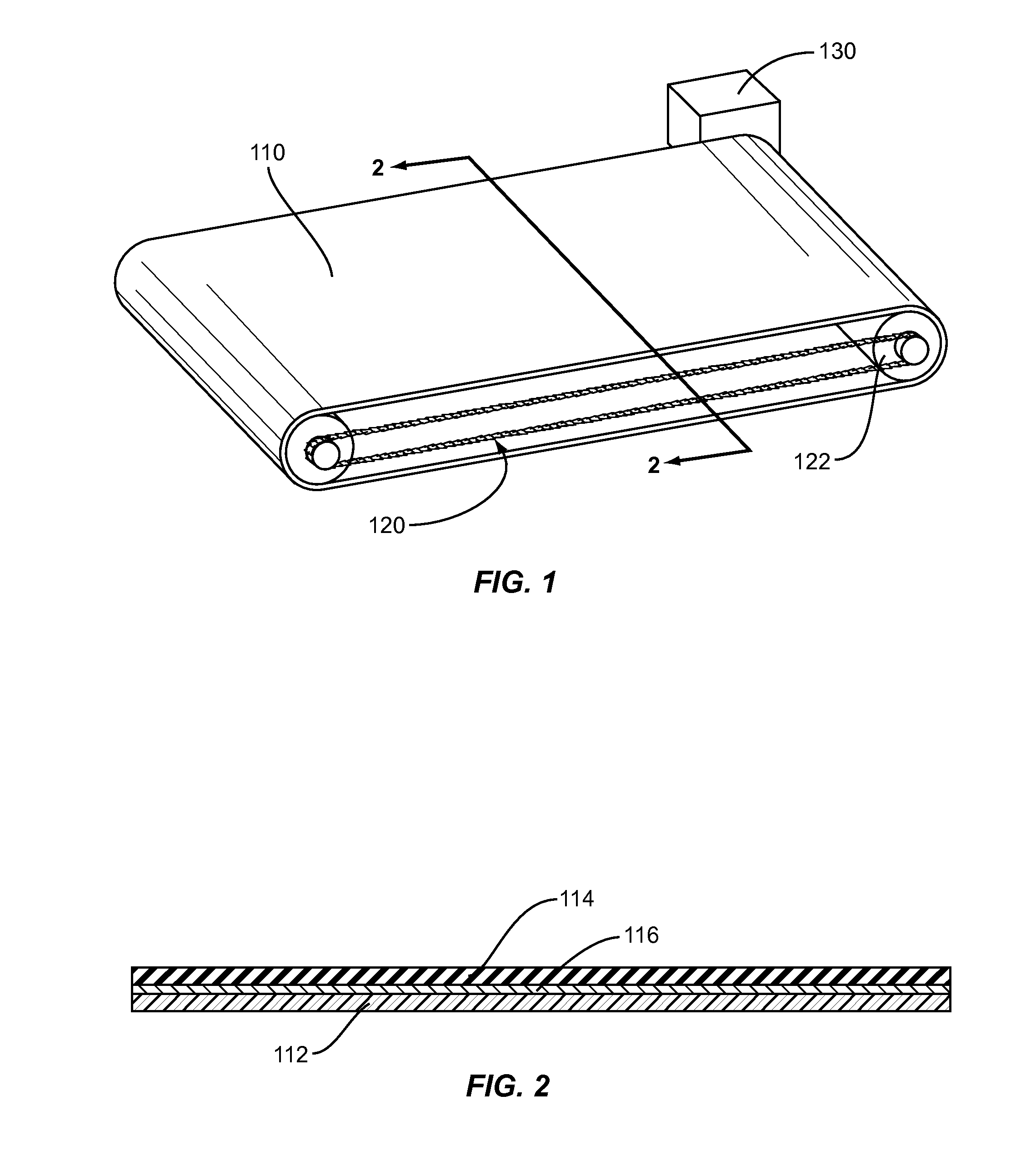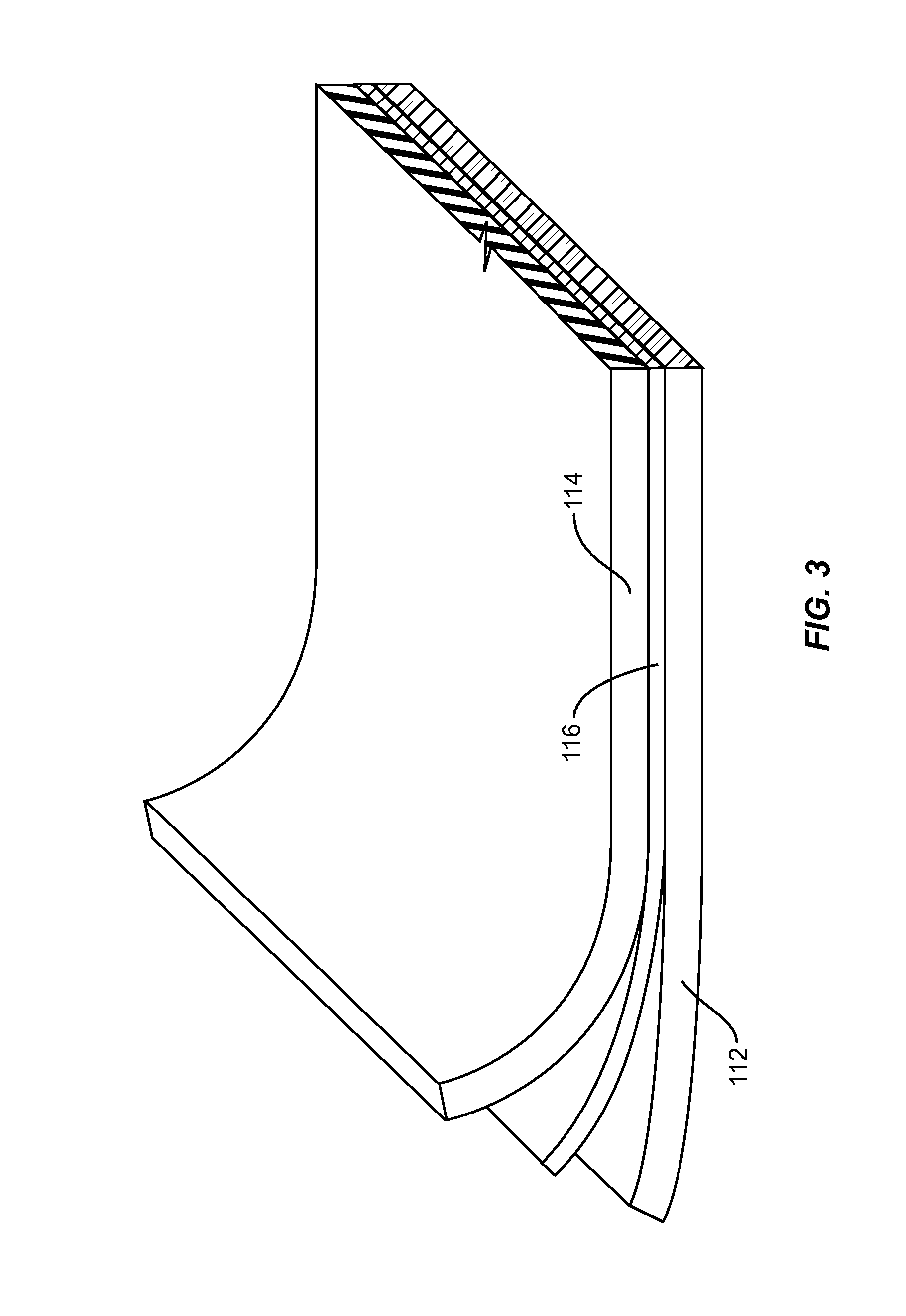Lightweight reinforced conveyor belt structure
a technology of reinforced conveyor belts and heavy-duty steel, which is applied in the direction of conveyors, transportation and packaging, etc., can solve problems such as operating efficiency, and achieve the effects of high tenacity, light weight and high strength
- Summary
- Abstract
- Description
- Claims
- Application Information
AI Technical Summary
Benefits of technology
Problems solved by technology
Method used
Image
Examples
example 1
[0054]A reinforcing fabric was formed from a woven fabric (style 902 from Hexcel) of 1200 denier ultra high molecular weight polyethylene yarn, designated SPECTRA® 900 from Honeywell International Inc., having tensile properties of 28 g / d tenacity and 775 g / d modulus. The fabric was a 17×17 ends / inch (6.7×6.7 ends / cm) plain weave fabric having a thickness of 0.017 inch (0.43 mm).
[0055]A bonding layer film formed from an ethylene vinyl acetate polymer (EVA) film having a thickness of 0.003 inch (0.076 mm) was tacked to one side of the fabric. The rubber compound layer was formed from a blend of 80% natural rubber and 20% of styrene butadiene (formulation 2148 from Specialty Tires) and was attached to the bonding layer. The thickness of the rubber layer is 0.0625 inch (1.6 mm).
[0056]Lengths of fabric / EVA / rubber were laid out and formed into a roll. The tightly wound roll was wrapped with heat resistant tape and heated in an oven to a temperature of between 210° F. and 300° F. for up t...
example 2
[0058]Example 1 is repeated using as the fibrous layer Kevlar® 29 fabric from Du Pont.
[0059]Similar results are noted.
example 3
[0060]Example 1 is repeated using as the fabric layer a unidirectionally oriented structure of high modulus polyethylene fibers.
[0061]Similar results are noted.
PUM
 Login to View More
Login to View More Abstract
Description
Claims
Application Information
 Login to View More
Login to View More - R&D
- Intellectual Property
- Life Sciences
- Materials
- Tech Scout
- Unparalleled Data Quality
- Higher Quality Content
- 60% Fewer Hallucinations
Browse by: Latest US Patents, China's latest patents, Technical Efficacy Thesaurus, Application Domain, Technology Topic, Popular Technical Reports.
© 2025 PatSnap. All rights reserved.Legal|Privacy policy|Modern Slavery Act Transparency Statement|Sitemap|About US| Contact US: help@patsnap.com



